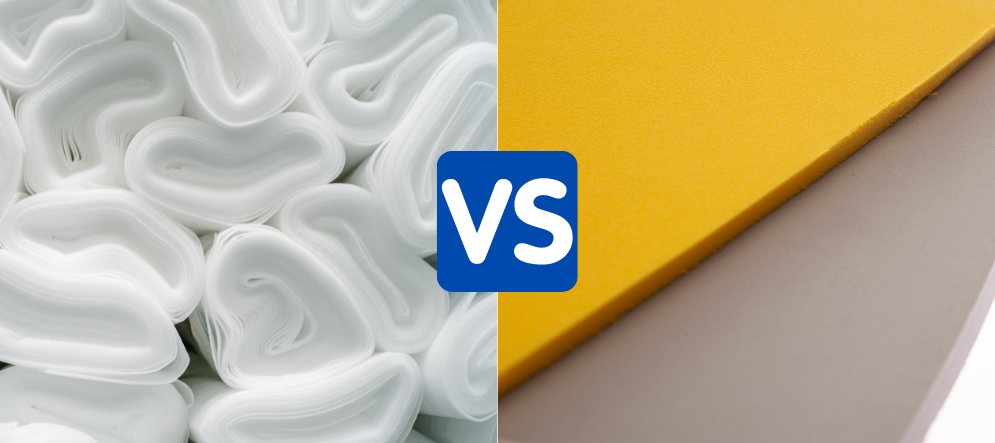After finishing reading this article, you will be familiar with the differences and uses of each foam manufactured with polyethylene in the market: Crosslink foam with a polyethylene base (XLPE foam) and expanded polyethylene (PE).
1. Production Process
While polyethylene is used as the main raw material for both compounds, the production processes are different.
Crosslink foam is produced through a crosslinking process (closed-cell), where a chemical is added to interconnect the molecules, resulting in a material characterized by its softness to the touch and physical strength.
Expanded polyethylene is manufactured through a thermal expansion process (open-cell). When the material is heated and expanded, it forms a cell structure with air bubbles inside.
Characteristics of Closed-Cell Structure:
- Individual cells of the material are completely isolated.
- Each cell is a separate and sealed entity.
- Gases or liquids cannot freely flow through the material, giving it thermal and acoustic insulation properties.
Characteristics of Open-Cell Structure:
- Individual cells are interconnected, forming a three-dimension network.
- Each cell has openings that allow the flow of gases or liquids.
- The material is more permeable and has a lower density than a compound with a closed-cell structure.
2. Distinctive Attributes of XLPE Foam and Expanded Polyethylene
In the following table, you will find the main characteristics that differentiate the materials:
| Properties |
XLPE |
EP |
| Cell |
Closed |
Open |
| Densities |
From 1.5 Lb/ft3 to 19 Lb/ft3 |
From 1.5 Lb/ft3 to 9 Lb/ft3 |
| Part protection |
It does not scratch the pieces and is ideal for transporting them |
There is a risk of scratching the pieces |
| Durability |
It has greater durability |
It tends to wear out more easily |
| Flexibility |
It’s flexible |
It’s flexible |
| Thickness |
From 2 mm to 50 mm |
Usually, the maximum is 12.5 mm, and they are glued together to achieve a greater thickness |
| Colors |
It can be customized |
It comes in white, black, or pink colors |
| Uses |
It can be used in different industries |
Generally, it can only be used in packaging and transporting of parts |
3. Comparison of flexibility of Crosslink foam with Expanded Polyethylene (EP)
Due to its lower density and different structure, expanded polyethylene tends to be more flexible than Crosslink foam based on polyethylene. Some tests can help determine which one is more suitable for the required use:
- Flexion tests.
- Torsion tests.
- Compression tests.
Evacolors has over two decades of experience in manufacturing Crosslink foam with different bases and characteristics to provide materials to various industries. Get in touch with us and discover the range of products we have available for you


